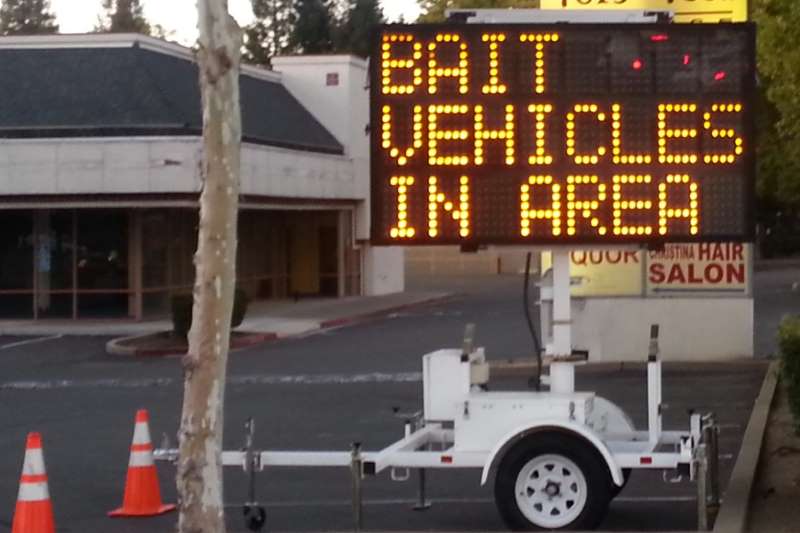
By Hazel Ford–
Police have a message for would-be thieves in Citrus Heights: if you steal something, it just might be a ‘bait’ item and you’ll end up in jail.
Thanks to the Citrus Heights Police Department’s “bait theft reduction program,” over 100 felony arrests have been made so far in 2017. Bait items include anything from cars, trailers, bikes, and construction equipment, which are equipped with GPS trackers or other technology that enable officers to nab the thieves.
Police said more than 70% of those arrested with bait this year had a prior felony on their record and nearly 4-out-of-every-5 suspects were either on probation, parole, or supervised release. More than three-quarters of the suspects had committed a prior theft-related crime and over 60% had a prior drug-related arrest.
In a recent news release about the program, police said officers are able to efficiently and effectively fight crime using a statistical, data-driven model to analyze which items are most frequently stolen in each area of the city. Police then transform commonly stolen items into “bait,” which are strategically placed throughout Citrus Heights.
Citrus Heights Police Lt. Dave Gutierrez told The Sentinel on Tuesday that the department’s bait program is a year-round effort that formally launched in the city last year. He said bait vehicles were also in use by the department prior to 2016, with high profile “bait” warning signs being a regular sight around the city for the past few years.
Answering a common question heard by residents about why the bait program is broadcast publicly where thieves can see it, Sgt. Chad Morris previously told The Sentinel that bait warning signs are primarily aimed at preventing theft in the first place.
“Inherently the sign boards don’t do any thing as far as [making arrests], but what they do is they act as a deterrent,” Morris said. “People see them; they may think twice about victimizing one of our citizens.”
The prevention aspect is also highlighted in several law enforcement and insurance company studies on auto theft. In 2014, the Insurance Corporation of British Columbia documented a 75 percent drop in vehicle thefts over a 10-year period in British Columbia, following the launch of a bait car program in 2003.
Lt. Gutierrez also cited the deterrent aspect of the program as a factor for why no bait arrests have been made in recent weeks, noting that if no one is stealing police bait, they likely aren’t stealing items from the community either. As of Dec. 7, he said no bait arrests had been made since Nov. 22nd.
“Our desire would be to deploy all kinds of bait items throughout the city and for no one to steal them,” the lieutenant said. “We want the criminal element to know we have the programs in place, so maybe they second guess themselves or think twice about stealing the item, fearing it’s a bait item.”
